We use information collected through cookies and similar technologies to improve your experience on our site, analyze how you use it and for marketing purposes.
Your privacy settings
We and our partners use information collected through cookies and similar technologies to improve your experience on our site, analyze how you use it and for marketing purposes. Because we respect your right to privacy, you can choose not to allow some types of cookies. However, blocking some types of cookies may impact your experience of the site and the services we are able to offer. In some cases, data obtained from cookies is shared with third parties for analytics or marketing reasons. You can exercise your right to opt-out of that sharing at any time by disabling cookies.
Manage Consent Preferences
Necessary
Always ON
These cookies and scripts are necessary for the website to function and cannot be switched off. They are usually only set in response to actions made by you which amount to a request for services, such as setting your privacy preferences, logging in or filling in forms. You can set your browser to block oralert you about these cookies, but some parts of the site will not then work. These cookies do not store any personally identifiable information.
Analytics
These cookies and scripts allow us to count visits and traffic sources, so we can measure and improve the performance of our site. They help us know which pages are the most and least popular and see how visitors move around the site. All information these cookies collect is aggregated and therefore anonymous. If you do not allow these cookies and scripts, we will not know when you have visited our site.
Embedded Videos
These cookies and scripts may be set through our site by external video hosting services likeYouTube or Vimeo. They may be used to deliver video content on our website. It's possible for the video provider to build a profile of your interests and show you relevant adverts on this or other websites. They do not directly store personal information, but are based on uniquely identifying your browser and internet device. If you do not allow these cookies or scripts it is possible that embedded video will not function as expected.
Google Fonts
Google Fonts is a font embedding service library. Google Fonts are stored on Google's CDN. The Google Fonts API is designed to limit the collection, storage, and use of end-user data to only what is needed to serve fonts efficiently. Use of Google Fonts API is unauthenticated. No cookies are sent by website visitors to the Google Fonts API. Requests to the Google Fonts API are made to resource-specific domains, such as fonts.googleapis.com or fonts.gstatic.com. This means your font requests are separate from and don't contain any credentials you send to google.com while using other Google services that are authenticated, such as Gmail.
Marketing
These cookies and scripts may be set through our site by our advertising partners. They may be used by those companies to build a profile of your interests and show you relevant adverts on other sites. They do not store directly personal information, but are based on uniquely identifying your browser and internet device. If you do not allow these cookies and scripts, you will experience less targeted advertising.
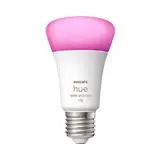
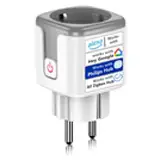
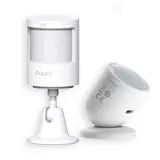
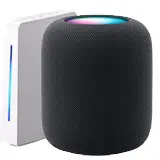
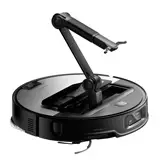

What are the safest smart heaters for children?
Worried about keeping your kids warm this winter? That's normal! But safety comes first, especially when we're talking about heaters. Finding a safe smart heater for kids may seem complicated, but don't worry, we're here to help. We'll explore the best options, safety features and tips to keep your home warm ...
Why choose a child-safe smart heater?
Traditional heaters can be dangerous. They can cause burns if touched or start fires if accidentally covered. Smart heaters, on the other hand, offer advanced safety features that make them a much safer option for homes with children. A smart heater with parental control and safety sensors can make all the difference.
Benefits of smart heaters:
Key safety features in smart heaters for kids
Not all smart heaters are the same. Some offer better safety features than others. Here's what to look for:
Automatic rollover shutdown
This is an essential feature. If the heater is dropped, it will automatically shut off. This prevents fires and reduces the risk of burns.
Overheating protection
If the heater gets too hot, it will automatically shut off. This feature prevents the heater from catching fire or causing damage.
Surface cool to the touch
Look for heaters with a surface that remains cool to the touch, even when the heater is operating. This reduces the risk of burns if children accidentally touch the heater.
Child lock
Some smart heaters have a child lock feature that prevents children from changing the settings or turning the heater on and off. This is especially useful if you have curious young children.
Parental control through the app
Smart heaters are often controlled through an app. Look for those that offer parental control options, such as the ability to set temperature limits or restrict access to certain features.
Non-toxic materials
Make sure the heater is made of non-toxic materials, especially if you have babies or small children who may put objects in their mouths.
Types of child-safe smart heaters
There are several types of smart heaters on the market. Some are more suitable for families with children than others.
Ceramic heaters
Ceramic heaters are a good choice for homes with children. They are energy efficient and often have safety features such as automatic tip-over shut-off and overheat protection. In addition, many models have a surface that stays cool to the touch.
Oil heaters
Oil heaters take longer to heat up, but they also take longer to cool down. This makes them less likely to cause accidental burns. However, it is important to note that the surface can get hot, so it is important to keep children away from the heater.
Panel heaters
Panel heaters are slim and wall-mountable, making them a good choice for small spaces. Some models have a surface that stays cool to the touch and safety features such as automatic shut-off on tip-over.
Infrared heaters
Infrared heaters heat objects and people directly, rather than heating the air. This makes them more energy efficient, but also means that the surface can get quite hot. It is important to be careful and keep children away from the heater.
Recommendations for child-safe smart heaters (examples)
Here are some examples of smart heaters that meet the above safety criteria:
Important: Always read reviews from other parents and check safety certifications before buying a heater.
Tips for using smart heaters safely with children
Even with a smart heater with safety features, it's important to follow some precautions to keep your kids safe:
More practical tips:
Where to place the smart heater in the room?
The location of the heater is also important. Place the heater away from high-traffic areas, such as hallways and doorways. Avoid placing it near soft furniture such as sofas or beds, as they can be flammable. Ideally, place it on an interior wall, away from windows and doors, to avoid drafts.
Additional child safety considerations
Beyond the characteristics of the heater, consider these aspects:
The ideal temperature for the baby's room
The recommended temperature for a baby's room is between 16 and 20 degrees Celsius (60-68 degrees Fahrenheit). Use a thermometer to monitor the temperature and avoid overheating.
The importance of ventilation
Make sure the room is well ventilated, even when using a heater. Open a window or door briefly to allow fresh air to circulate.
Dressing the child appropriately
Instead of relying solely on the heater, dress your child in clothing appropriate for the weather. Use layers of clothing that can be easily removed if your child gets too hot.
Maintenance of the intelligent heater
Proper maintenance prolongs the service life of the heater and ensures its safety.
Regular cleaning
Clean the heater regularly to remove dust and dirt. Unplug the heater and use a soft, dry cloth to clean it. Do not use water or abrasive cleaners.
Review of components
Check the heater components regularly, such as the power cord and plug. If you find any damage, stop using the heater and have it repaired.
Adequate storage
When the heater is not in use, store it in a safe and dry place. Protect it from dust and moisture.
Conclusion: Warmth and security for your children
Choosing the right smart heater for your home with children involves careful consideration of safety features, the type of heater and following recommended precautions. A smart heater with automatic rollover shut-off, overheat protection and cool-to-the-touch surface can provide safe and comfortable warmth for your children. Prioritizing safety is essential to create a warm and protected environment for your little ones.
Now that you know the best safe smart heaters for kids and how to use them correctly, share this information with other parents! Your experience can help other families make informed decisions and keep their children safe and warm this winter. Do you have any additional questions or tips? Leave us a comment!
Related Posts
Smart thermostats: how to save up to 30% on heating
Tired of sky-high heating bills that make you shiver more than winter? There's a smart solution that might be waiting for you: the smart thermostat. Not only does it let you control your home's temperature from anywhere, but it can also help you save up to 30% on your heating costs. Find out how…
How to control your home's temperature remotely
Imagine coming home after a long day and finding the perfect temperature, regardless of the weather outside. Sound like science fiction? Not anymore. Controlling your home's temperature remotely is an affordable reality that offers convenience, energy savings and greater control over your environment. Why control ...
How to choose a smart air conditioner or convert a regular one?
Tired of the sweltering summer heat? Dreaming of controlling your home's temperature from your smartphone? The good news is that you can enjoy a cool, connected environment even without spending a fortune on a brand new air conditioner. In this article, we'll walk you through a step-by-step guide to choosing the smart air conditioner ...
Smart blinds vs. motorized curtains: which option is better?
Tired of getting up to adjust your curtains or blinds? Home automation offers you stylish and practical solutions. Two of the most popular options are smart blinds and motorized shades. But which one is best for you? This article will walk you through the key differences, advantages and disadvantages, and ...